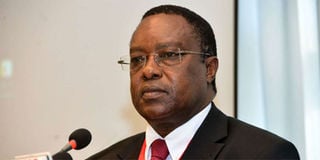Women still far behind men in formal jobs, says study

Planning PS Julius Muia has said the delays in disbursements were because of the effect of the elections but said the situation was quickly improving. FILE PHOTO | NMG
What you need to know:
- The modern or formal sector employment had 880,000 women compared to 1.68 million men in 2016.
- This shows women trail men by 65.6 percentage points in formal employment.
Only about a third of Kenyans in formal employment are women, a new study shows highlighting the continued underrepresentation of the female gender in the job market.
The modern or formal sector employment had 880,000 women compared to 1.68 million men in 2016, according to a study by the Kenya National Bureau of Statistics (KNBS).
This shows women trail men by 65.6 percentage points in formal employment. The study, which collates data from the economic survey since 2010, shows that more men than women have been employed in majority of key sectors such as agriculture and manufacturing indicating they work less in formal wage employment than their male counterparts.
Women with wage employment in agriculture stand at 112,000 compared to 225,000 men while those in wage employment in manufacturing stands at 49,000 compared to 252,000.
Women in wage employment in wholesale sectors stand at 54,000 compared to 186,000 men. Those in wage employment in public administration stand at 83,000 compared to 148,000.
Speaking during the study’s launch, newly appointed Planning PS Julius Muia said despite the poor showing by women in formal employment, efforts to bridge the gender gap are paying off.
“The government has made significant progress in advancing gender equality in all sectors of the economy,” said Dr Muia.
Women fare poorly than men in wage employment in the education sector at 249,000 in comparison with 276,000 men.
In the service sector women buck the trend as 66,000 of them are in wage employment compared to 61,000 men.
The study titled Women and Men in Kenya released on Thursday further reveals the presence of less women than men at the top of corporate boardrooms.




